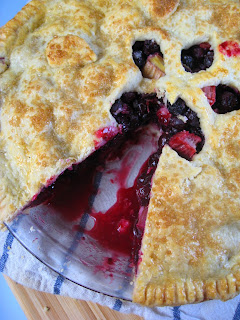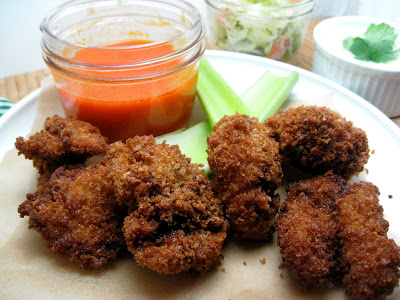Today Karen over at the
Sugarpill apothecary was
giving out samples of a "mystery" vanilla extract. She wanted a neutral taste test, so she withheld the details about this extract until after we had a chance to try it out. The only info we got was that it is a high-end (read:expensive) extract with beans sourced from somewhere unusual. Fascinating.
I decided to compare the mystery extract with the vanilla extract I use most often in my kitchen, Cook's Choice. It's not the most expensive brand, but it is pretty well respected and good quality.
The color of the mystery vanilla extract is a bit more golden, and it seems slightly more transparent than the Cook's (but that may be differences in age, my bottle of Cook's has been around for a few months). If clarity is any indication of quality, the mystery extract wins out there. They smell very similar, but the mystery extract has a subtle citrus-y scent and seems to be a bit more floral.
For a taste test, I diluted about half a dropper of each type in 1oz of milk. Much like in the smell-test, the two tasted very similar with the mystery vanilla extract having a slightly more floral and crisp taste. The differences are so subtle they are hard to describe, but I would call the mystery vanilla almost orange-blossom flavored.
For the sake of science I also compared them to this really cheap Kroger brand vanilla extract. Compared to the two high quality extracts this one had basically no flavor.
I decided to test out the extract on a
basic butter cookie recipe from King Arthur Flour's website. As you may know, I love their site and use their recipes a lot. The version on their site also has an icing recipe which I skipped this time around. They also provide the ingredients list in ounces or grams (instead of by volume) if you prefer that method (I do).
Here's the recipe:
- 1 1/4 cups confectioners' sugar
- 1 cup + 2 tablespoons unsalted butter, room temperature
- 1 large egg yolk
- 1 teaspoon salt
- 2 teaspoons vanilla extract
- 2 3/4 cups unbleached all-purpose flour
 |
| Butter and sugar - how so many good things start |
|
- In a large bowl combine sugar, butter, egg yolk, salt and extract. Beat together until smooth.
- Add the flour and beat together until it forms a cohesive and well blended cookie dough. Scrape down the sides as necessary. It will seem dry at first and then suddenly come together at the end.
- Divide the dough in half, wrap in plastic and refrigerate until it firms up a bit (about half an hour at the minimum, up to 24 hours).
- Once the dough is chilled, roll it out to about 1/8" - 3/16" thick and cut it into whatever shape you want or use cookie cutters. Re-roll and cut the scraps too.
- Bake the cookies on an ungreased or parchment lined baking sheet at 350F for 10-20 minutes until the edges begin to brown but the cookie is still pale. The dough won't spread very much so you can fit quite a few on one sheet.

These cookies are flaky and buttery. They are very good plain, and I can also see them standing up to a sweet frosting very well. As far as the vanilla flavor goes, I couldn't tell the difference between the mystery vanilla and my normal brand. They say in baking many of the chemical compounds that make up natural vanilla extract get burned off and it is hard to distinguish the little notes that make the extract special. I would save the extra fancy vanilla extract for low-heat uses.
After I took some of these cookies back over to Karen, she revealed to me more about the mystery vanilla. It is from a company called
Lagrima. It is made in Seattle from beans sourced from Uganda! I would have to guess that the flavor differences come from the differences between the Ugandan bean and the more commonly used beans from Madagascar. Also, probably differences between the small batch method vs. industrially produced vanilla.
























